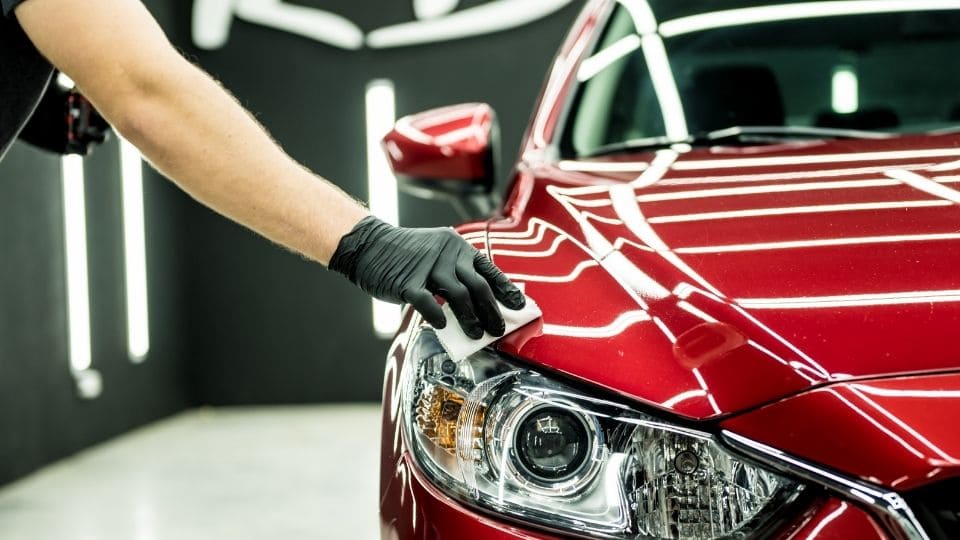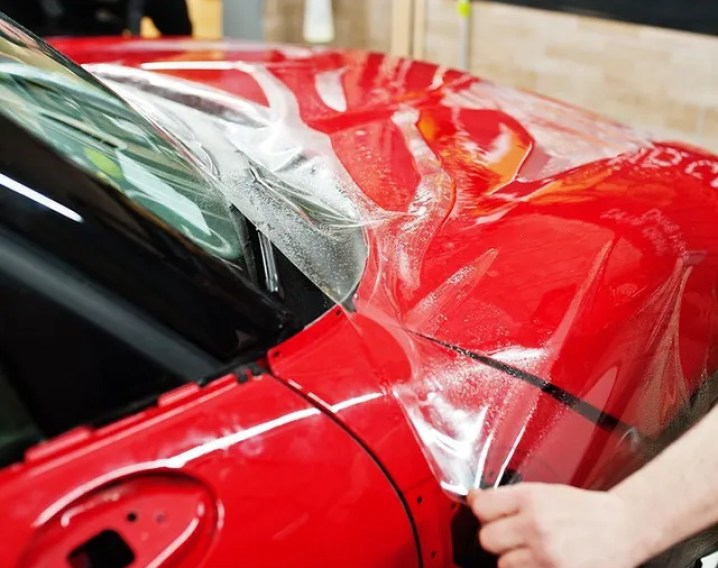Today, there are several ways to protect car paint. One can opt for methods such as utilizing a car wash, hand washing, undertaking one or two-step paint correction procedures, applying carnauba wax, ceramic-infused products, or opting for a full ceramic coating. Let’s delve into each of these options.
The best ways for protecting your car paint’s finish of your car depends on various factors including your budget, time availability, and desired level of protection and aesthetics. Here’s a breakdown of some common methods:
- Regular Washing: Regularly washing your car is essential to remove dirt, grime, and contaminants that can damage the paint over time. You can choose between using a car wash, either automatic or self-serve, or hand washing it yourself. Hand washing allows for greater control and attention to detail. Personally, it’s best to avoid those automatic car washes, especially the drive through ones where there machinery can scratch and put abrasions on the paint of your car. You may be okay with a touch-less car wash that only sprays pressured water, but I often opt in for hand washing using a reputable car wash soap that’s ph-balanced and gentle on any coatings you may have. Never use dish soap and always use a microfiber towel such that you don’t put additional scratches on your car. Car washing alone does not protect your car from the harsh sun, so I recommend doing at least one of the 4 methods below.

- Paint Correction: Over time, your car’s paint will get imperfections such as swirl marks, scratches, or oxidation, you may opt for paint correction. This involves using abrasive compounds to remove surface defects and restore the paint’s clarity and shine. One-step and two-step paint correction processes vary in intensity and complexity. Many DIY-ers like myself use an orbital polisher and a microfiber and foam pads to polish out the scratches. We’ll use different types of compounts and polishing material to remove these scratches depending on severity.

- Waxing: Applying wax to your car provides a protective layer that helps repel water, dirt, and UV rays, thereby preserving the paint finish. Traditional carnauba wax offers a deep, warm shine, while synthetic waxes provide longer-lasting protection. This protection doesn’t last forever, but will give you about 6-12 months before having to replenish the wash. It is important to remove the sediment and dirty using a clay bar before any paint correction or waxing.

- Ceramic Coatings: Ceramic coatings provide a durable, semi-permanent layer to protect car paint. They offer superior resistance to UV damage, chemical etching, and water spotting compared to traditional wax. Ceramic coatings typically require professional application and can last several years with proper maintenance. Today, you see a lot of companies advertising it. These coatings last between 2 to 5 years depending on application and how many coats you put on. It’s basically a 9H hardness sacrificial layer to protect car paint. It goes right on your clear coat and fills in the microscopic imperfections and protects against the elements. This is often the most expensive service out of what I list here, but it requires less maintenance as traditional waxing, but still requires polishing and paint correction before applying ceramic coating. The secret sauce of ceramic coating is Silicon Dioxide (SiO2), which is a hardened quartz layer that solidifies in cures in 48 hours from application. When I talk about Ceramic coatings, I’m referring to products that contain at least 90%+ of Silicon Dioxide (SiO2), however, many traditional products are adding “ceramic coating” to their line of wax products, but its more ceramic inflused, which is a lesser concentration of Silicon Dioxide (SiO2).

- Ceramic Infused Products: These products as mentioned above combine the ease of application of traditional waxes or sealants with the enhanced durability and hydrophobic properties of ceramic coatings. They offer an intermediate level of protection and can be applied by enthusiasts without professional assistance. They do have some properties of ceramic coating but possibly around 20% or less, and only last just as long as a traditional carnauba wax would.
Ultimately, the best way to maintain your car’s paint finish depends on your specific preferences and needs. For optimal results, consider a combination of regular washing, occasional paint correction as needed, and the use of protective products such as wax or ceramic coatings every 6 months to 2 years.
Achieving a 20-year lifespan for your car’s paint with minimal fade or clear coat deterioration requires a combination of proactive maintenance and protective measures.


- Paint Protection Film (PPF): Consider applying paint protection film to vulnerable areas such as the front bumper, hood, fenders, and side mirrors. PPF acts as a sacrificial barrier, shielding the paint from rock chips, scratches, and environmental damage.
- Ceramic Coating: Apply a high-quality ceramic coating to your car’s paint surface. Ceramic coatings provide long-lasting protection against UV rays, oxidation, chemical etching, and water spotting. They also enhance the paint’s gloss and ease of cleaning. As for products, you’ll hear lots of buzz and hype around Ceramic Pro, which is exclusive to only their vendors and comes at a high cost, but there are plenty of DIY options and products that can be purchase including Gtechniq – CSL Crystal Serum, Chemical Guys Carbon Force Ceramic Protective Paint Coating System, and Avalon King Armor Shield IX.
- Garage Parking: Whenever possible, park your car in a garage or covered parking area to shield it from the elements. Exposure to sunlight, rain, snow, and harsh weather conditions can accelerate paint fade and clear coat deterioration.
- Regular Maintenance: Stay proactive with routine maintenance tasks such as waxing, polishing, and paint correction as needed. Waxing your car every few months helps maintain a protective layer and enhances shine. Periodic polishing can remove minor imperfections and restore clarity to the paint.
- Avoid Harsh Chemicals: Use car care products that are specifically formulated for automotive use and avoid harsh chemicals that can damage the paint or clear coat. When cleaning, rinse off bird droppings, tree sap, and other contaminants promptly to prevent them from etching into the paint.
- Avoid Abrasive Materials: Use soft microfiber towels, foam applicators, and gentle washing mitts when cleaning your car. Avoid abrasive materials such as stiff brushes, rough sponges, or abrasive cleaners, as they can scratch the paint surface and will not protect car paint’s clear coat.
- Regular Inspections: Periodically inspect your car’s paint for any signs of damage or deterioration. Addressing issues promptly can prevent them from worsening and extend the lifespan of the paint finish.
By using two or more of the products listed above, and maintaining a consistent regimen of care and protection, you can significantly increase the longevity of your car’s paint and minimize the effects of fade and clear coat deterioration over a 20-year period.
I’ve been applying these methods above and will document my progress on protecting my RSX after I restore it.

